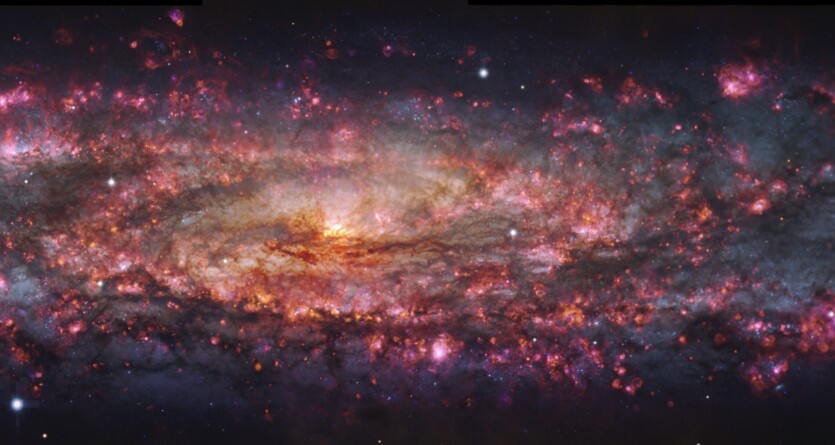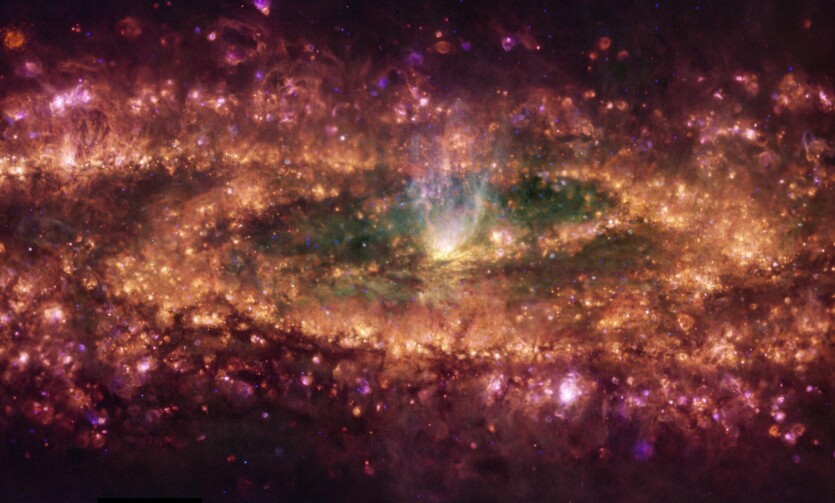
Astronomers have received the most detailed image of the distant galaxy Sculptor, which reveals the complexity of galactic systems.
The Sculptor Galaxy is located at a distance of 11 million light years from Earth and is also known as NGC 253. The images were obtained with the Multi Unit Spectroscopic Explorer (MUSE) spectrograph installed on the Very Large Telescope in Chile.
As the team leader of the astronomers emphasizes Enrico Congiu of the University of Chile, the Sculptor Galaxy is very easy to observe because it is close enough to see its internal structure and examine the building blocks in incredible detail. In addition, this galaxy is large enough to be considered as a single system.
For creating a single image, covering 65 thousand light-years, astronomers needed 100 separate images obtained during 50 hours of observations with MUSE. As a result, an incredibly detailed image of this galaxy, whose total length is 90 thousand light-years, was obtained.

«We can zoom in to study individual regions where stars form at scales close to those of individual stars, but we can also zoom out to study the galaxy as a whole», — explains a representative of a group of astronomers from University of Heidelberg in Germany Katherine Kreckel.
First results image analysis is already there. Astronomers have discovered 500 new planetary nebulae, gas and dust envelopes, ejected by stars like the Sun. Planetary nebulae, which, despite their name, have nothing to do with planets, may bear fruit in the future, as astronomers will be able to use them to measure distances. The next step for astronomers will be to study how the hot gas flows through NGC 253, changing its composition and helping to create new stars.
«How such small processes can affect a galaxy thousands of times larger is still a mystery», — notes one of the astronomers in the group from Ohio State University in the United States Adam Leroy.
James Webb Telescope finds oldest known galaxy — originated 280 million years after the Big Bang
The results of the study were published in the journal Astronomy & Astrophysics
Source: LiveScience

Spelling error report
The following text will be sent to our editors: